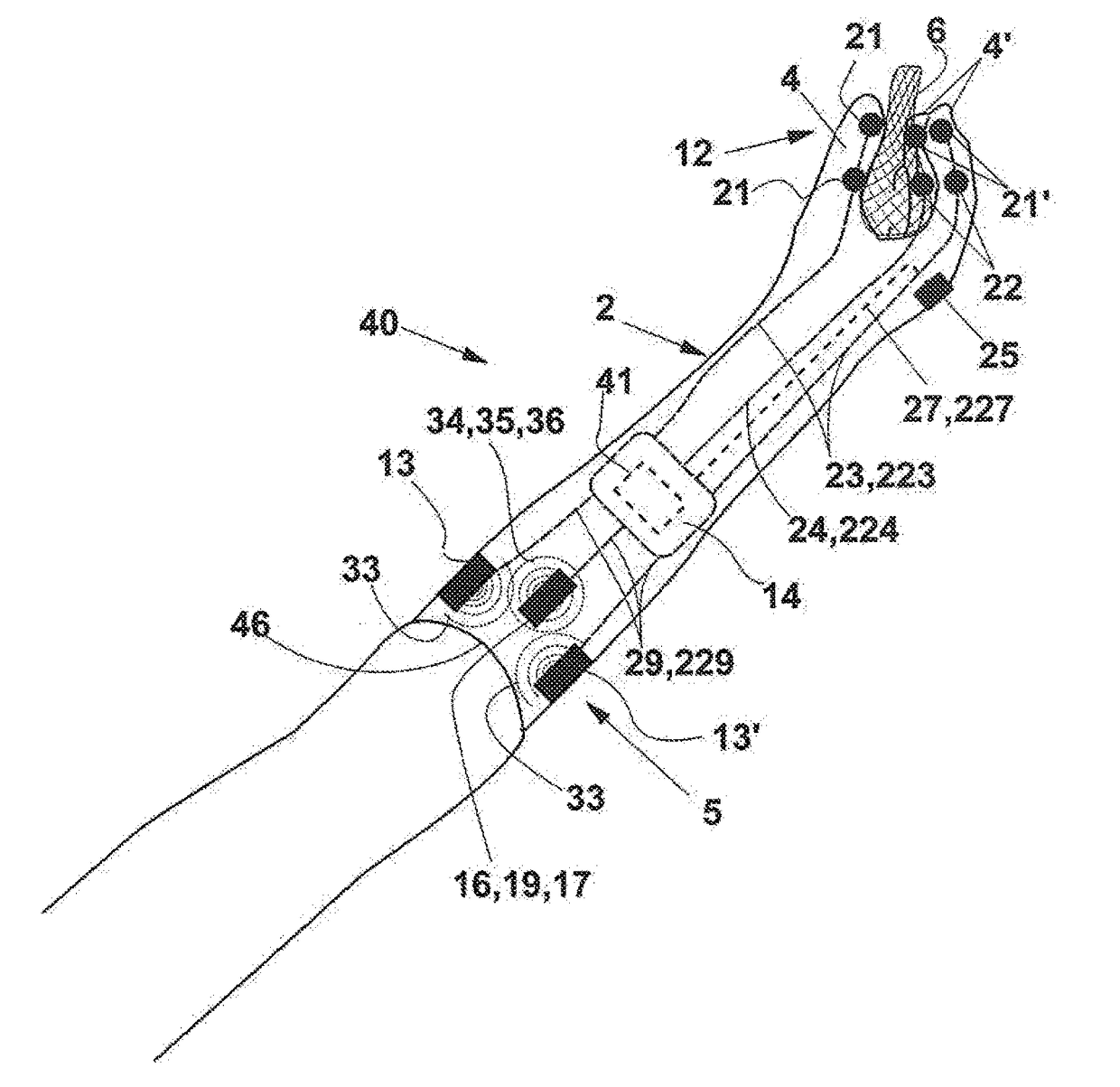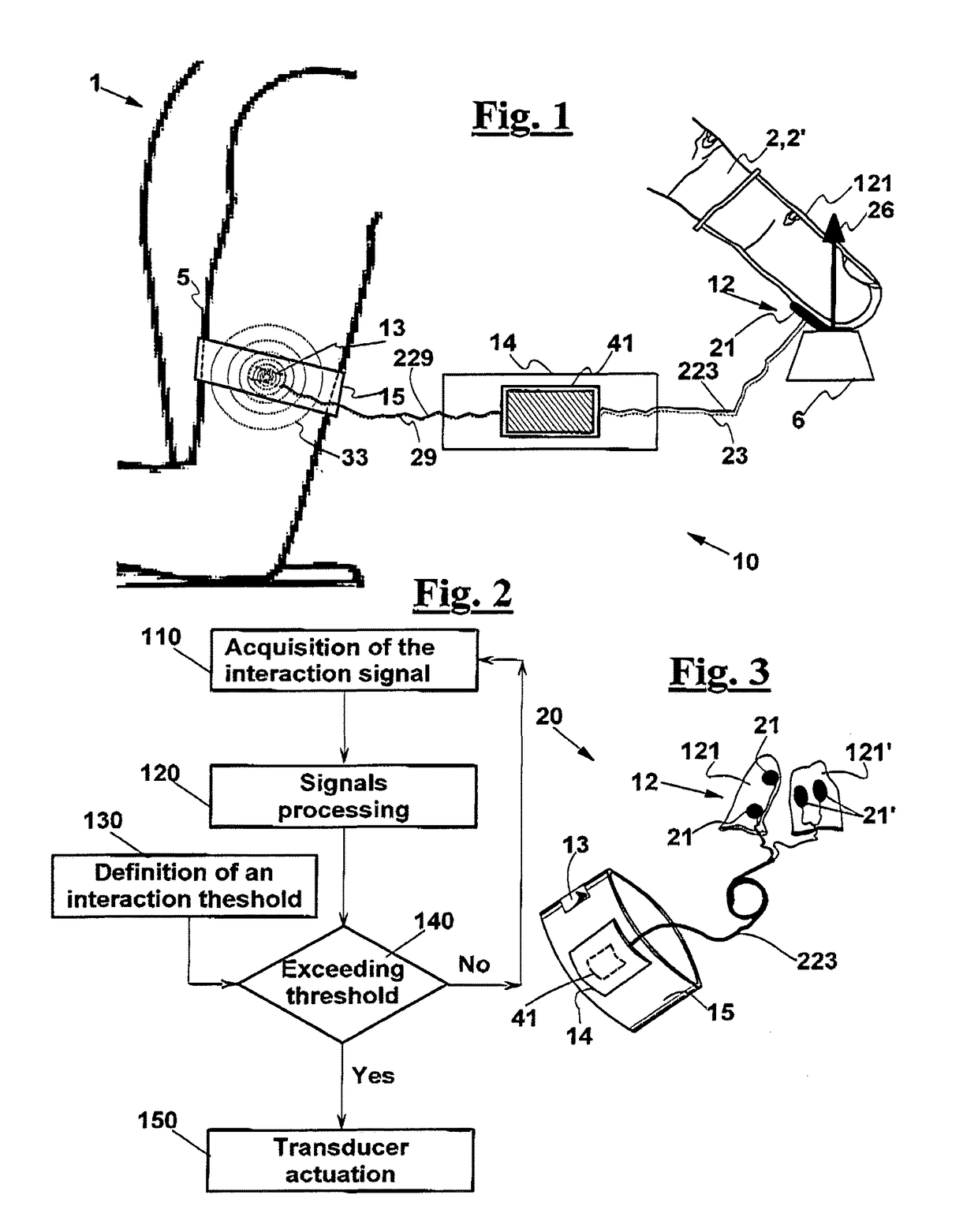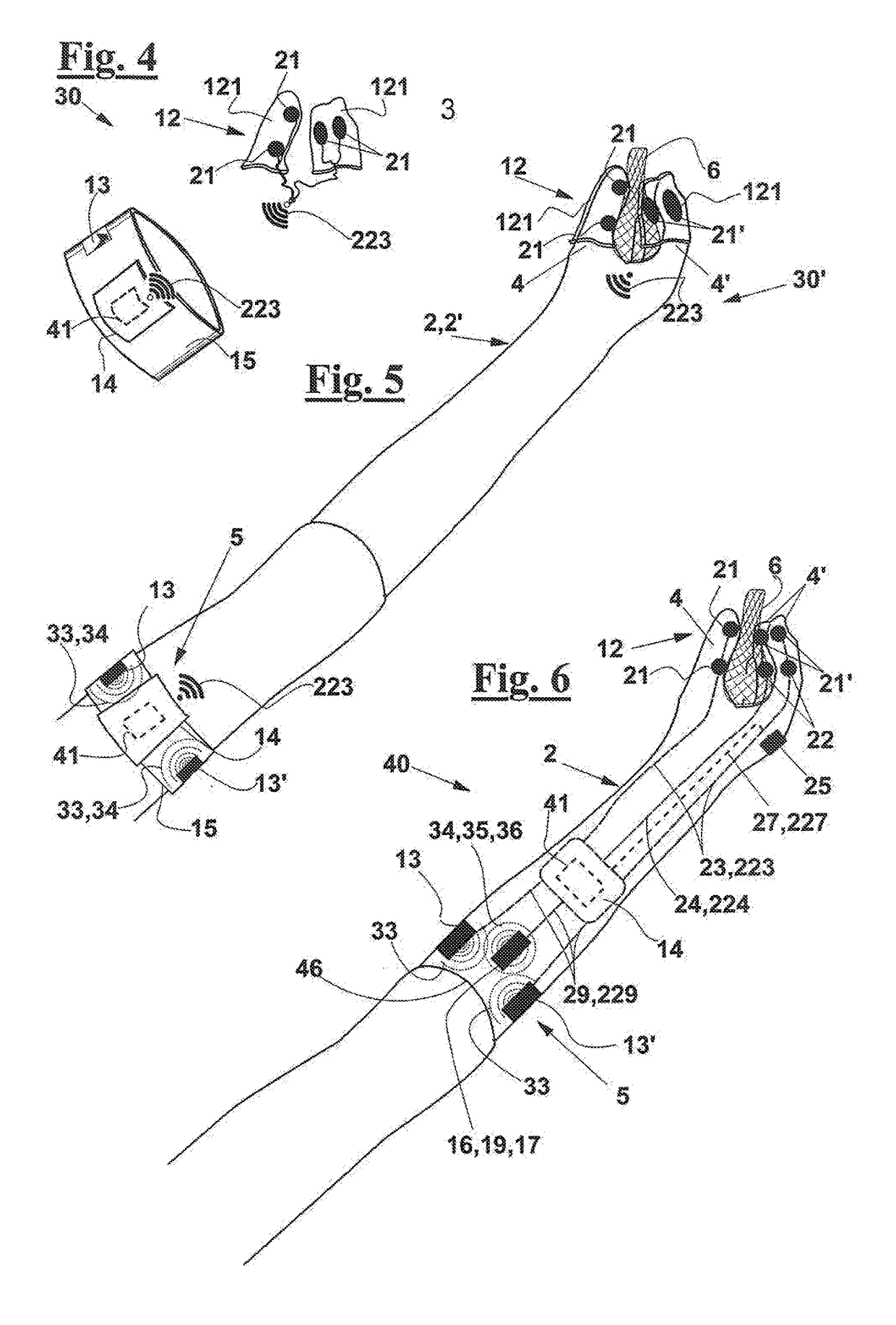A haptic feedback device
a haptic feedback and feedback technology, applied in the field of haptic feedback devices, can solve the problems of difficult to provide actuators, low selectivity of neural interfaces, and serious functional limitations, and achieve the effect of convenient put on and worn, and easy to be put on and worn
- Summary
- Abstract
- Description
- Claims
- Application Information
AI Technical Summary
Benefits of technology
Problems solved by technology
Method used
Image
Examples
Embodiment Construction
[0087]With reference to FIG. 1, a haptic feedback device 10 is described, according to the invention, for a user 1. The device is adapted to a user of a prosthetic body part 2, in this case a prosthetic portion of an upper limb such as a prosthetic finger, or for a user who is sensorially deficient at such a body part 2′, for example due to a spinal lesion or an ictus.
[0088]Device 10 comprises a sensor interface 12 equipped with at least one contact sensor 21. In this case, sensor interface 12 comprises a thimble 121 having at least one contact sensor 21 that is able to generate a contact signal 23, typically an electric signal, when sensor 21 receives an input 26 from an object 6, due to a contact or to a pressure that user 1 applies on object 6. For example, according to the sensor 21 type, input 26 can be a heat flux or an energy flux associated with an electromagnetic field or with a compression wave.
[0089]Sensor thimble 121 is worn on finger 2,2′, which can be a finger 2 of a p...
PUM
 Login to View More
Login to View More Abstract
Description
Claims
Application Information
 Login to View More
Login to View More - R&D
- Intellectual Property
- Life Sciences
- Materials
- Tech Scout
- Unparalleled Data Quality
- Higher Quality Content
- 60% Fewer Hallucinations
Browse by: Latest US Patents, China's latest patents, Technical Efficacy Thesaurus, Application Domain, Technology Topic, Popular Technical Reports.
© 2025 PatSnap. All rights reserved.Legal|Privacy policy|Modern Slavery Act Transparency Statement|Sitemap|About US| Contact US: help@patsnap.com



